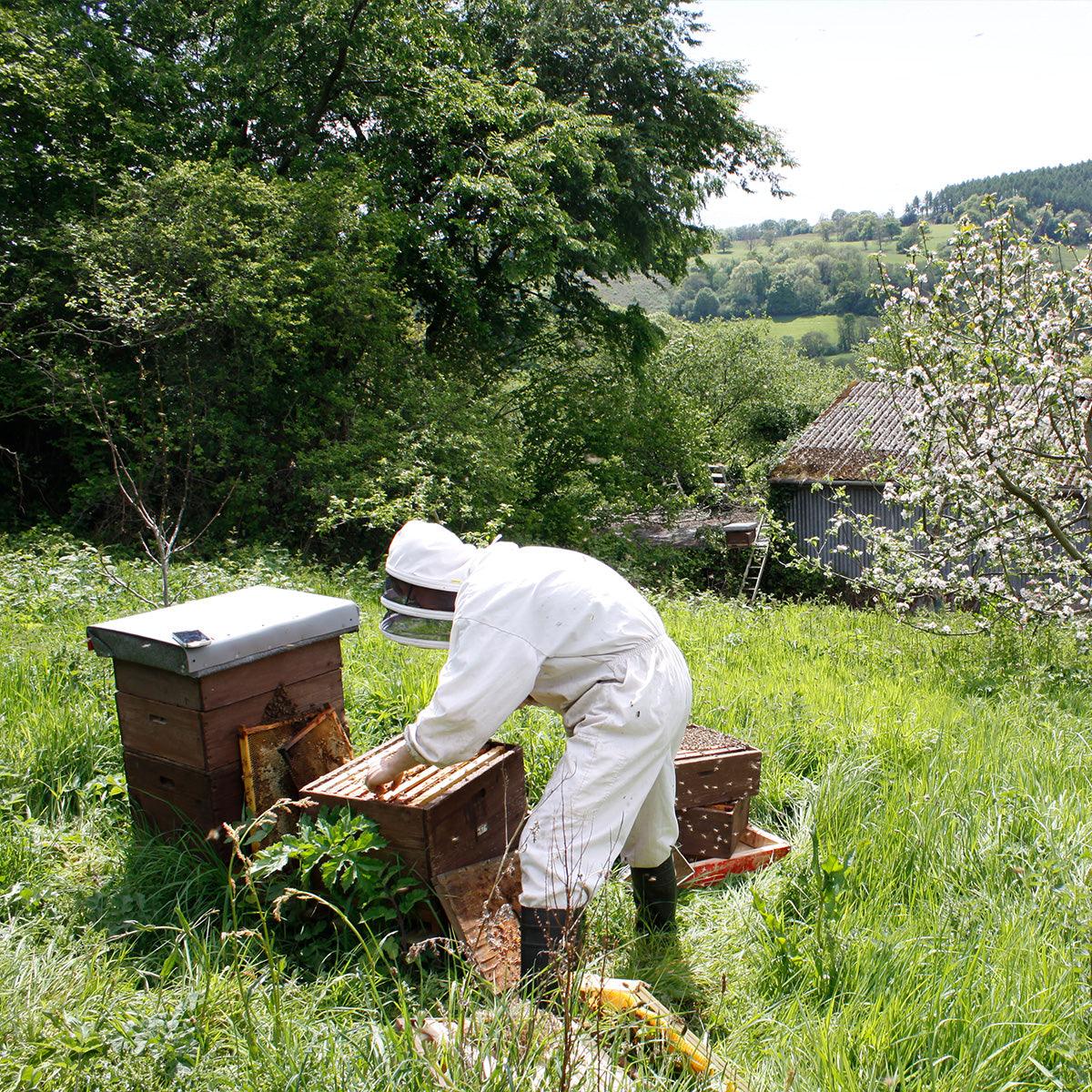Springtime is a crucial period for beekeeping as it marks the beginning of the active season for honeybee colonies. Once temperatures are warm, hive inspections can begin. This involves checking the health of the colony, assessing the queen's egg-laying activity, and ensuring that the bees have everything they need to thrive. This is a crucial time for the colony, but because they are harmed by cold temperatures we like to wait for a day above 12 degrees Centigrade. But we can’t delay for too long, getting the hives in good shape early on can really prevent problems occurring later on.
Beekeepers in spring often need to be on top of feeding their bees. If it is a cold spring, the growing hive can often run out of food and starve. Beekeepers may need to supplement the bees' diet with sugar syrup or pollen substitute to ensure that the colony has enough food to sustain itself until nectar becomes abundant later in the season. We don`t do this unless it is necessary for the bees` survival, we prefer for them to eat their own honey.
Late winter and spring are great for hive maintenance tasks such as cleaning and repairing equipment, preserving hives, and ensuring that hive entrances are clear and unobstructed, when the grass finally begins growing.
Towards the end of April, swarm prevention checks should be carried out. Spring is when honeybee colonies are most likely to swarm, which is not as scary as it sounds, as it is the natural reproductive process of honeybees. Beekeepers take measures to prevent swarming by providing ample space in the hive, ensuring good ventilation, and managing the colony's population by splitting strong colonies or adding supers (additional hive boxes) to accommodate growing populations. Losing a swarm early in the year usually means a loss of crop, but later in the year it can mean the replacement queen is unable to be mated properly which can lead to colony loss over the winter.
As nectar flow increases with the blooming of spring flowers, including Elderflower, an essential element to our Honey and Elderflower mead. As the hive population grows, beekeepers add supers to their hives to provide additional space for honey storage and processing. This encourages bees to forage more actively and gives them room to expand and store nectar.
Some larger scale beekeepers offer pollination services to farmers during spring, as honeybee colonies are essential for pollinating many agricultural crops. Beekeepers transport their hives to farms where they are needed, allowing the bees to forage on the crop flowers and facilitate pollination. Here at Hive Mind, we have taken our bees to apple orchards in Herefordshire to pollinate apple trees and to collect delicious apple blossom honey, a wonderful addition to our Traditional Mead.
10 jobs for spring beekeepers:
1: Check the bees have enough food
It is not uncommon for bees to starve in spring if there are any gaps in flowering plants, or the bees not being able to forage caused by cold snaps or heavy rainfall.
2: Check hives for gaps
This is more of a winter job really, but when it is still chilly it is important to check the integrity of the hives to prevent pests or rain getting in.
3: Choose your hive location
Once your hive is in position you will not be able to move it, even moving it 1 metre to the side will confuse the bees, and they will cluster at exactly the spot the hive used to be. If you do need to relocate them they must be moved at least 3 miles away. It is easier to do this in the spring whilst there are fewer bees in the hive and the hive is lighter, as honey hasn't been stored yet! Position hives in areas with abundant floral resources and encourage bees to take advantage of seasonal blooms.
4: Ensure the bees have enough space
The main cause for swarming is running out of space, this is caused by honey coming in, left over winter food and an expanding broodnest. Add supers before they need them!
5: Check for parasites / diseases
This is a year round job, but especially important in the spring as any issues now will mean the hives will be as healthy as possible going into the year.
6: Monitor queen activity
Spring is a crucial time for the queen bee as she ramps up egg laying to build up the colony's population. Regularly check for signs of a healthy queen, such as the presence of brood in various stages of development and the presence of eggs. If you notice any issues with the queen or signs of queenlessness, take appropriate action to requeen or address the issue promptly. This might mean looking out for queen cells in other colonies, or ordering a new queen online.
7: Prepare for swarm management
As the colony's population grows and resources become more abundant in spring, the likelihood of swarming increases. Take proactive steps to prevent swarming by providing ample space for the colony, conducting regular hive inspections, and employing swarm prevention techniques such as making splits or adding supers.
8: Provide supplemental feeding if necessary
Even with abundant forage available, colonies may still need supplemental feeding in early spring to stimulate brood production and colony growth. Monitor hive weight and pollen/nectar stores closely, and provide additional food if needed to ensure the colony has adequate nutrition to thrive.
9: Perform hive maintenance and equipment checks
Spring is an ideal time to perform routine maintenance on your hives and equipment. Inspect hive components for wear and damage, replace any worn-out or broken parts, and ensure hive entrances are clear and unobstructed. This will help maintain hive health and productivity throughout the season.
10: Stay informed and educated
Beekeeping practices and techniques are constantly evolving, so it's essential to stay informed about the latest developments in the field. Attend beekeeping workshops, seminars, or conferences, join local beekeeping clubs or online forums, and read up on beekeeping literature to expand your knowledge and skills as a beekeeper. Keeping abreast of current best practices and emerging issues will help you better care for your bees and manage your hives effectively.







Share: